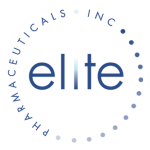
We could not find any results for:
Make sure your spelling is correct or try broadening your search.

 Dr Speculator Ninja
5 minutes ago
Dr Speculator Ninja
5 minutes ago
 jammy32
1 hour ago
jammy32
1 hour ago
 CMDawg
3 hours ago
CMDawg
3 hours ago
 jammy32
3 hours ago
jammy32
3 hours ago
 Pharma Sleuth
3 hours ago
Pharma Sleuth
3 hours ago
 Pharma Sleuth
3 hours ago
Pharma Sleuth
3 hours ago
 Pharma Sleuth
3 hours ago
Pharma Sleuth
3 hours ago
 Pharma Sleuth
3 hours ago
Pharma Sleuth
3 hours ago
 jammy32
3 hours ago
jammy32
3 hours ago
 Pharma Sleuth
3 hours ago
Pharma Sleuth
3 hours ago
 Pharma Sleuth
3 hours ago
Pharma Sleuth
3 hours ago
 jammy32
4 hours ago
jammy32
4 hours ago
 jammy32
4 hours ago
jammy32
4 hours ago
 CMDawg
5 hours ago
CMDawg
5 hours ago
 Dr Speculator Ninja
5 hours ago
Dr Speculator Ninja
5 hours ago
 imanjen13
5 hours ago
imanjen13
5 hours ago
 CMDawg
5 hours ago
CMDawg
5 hours ago
 Pharma Sleuth
5 hours ago
Pharma Sleuth
5 hours ago
 Lazarus Elite
6 hours ago
Lazarus Elite
6 hours ago
 Lazarus Elite
6 hours ago
Lazarus Elite
6 hours ago
 Lazarus Elite
6 hours ago
Lazarus Elite
6 hours ago
 Lazarus Elite
6 hours ago
Lazarus Elite
6 hours ago
 Lazarus Elite
6 hours ago
Lazarus Elite
6 hours ago
 Lazarus Elite
6 hours ago
Lazarus Elite
6 hours ago
 Lazarus Elite
6 hours ago
Lazarus Elite
6 hours ago
 Lazarus Elite
6 hours ago
Lazarus Elite
6 hours ago
 Lazarus Elite
6 hours ago
Lazarus Elite
6 hours ago
 Lazarus Elite
6 hours ago
Lazarus Elite
6 hours ago
 imanjen13
6 hours ago
imanjen13
6 hours ago
 CMDawg
6 hours ago
CMDawg
6 hours ago
 Pharma Sleuth
6 hours ago
Pharma Sleuth
6 hours ago
 Pharma Sleuth
6 hours ago
Pharma Sleuth
6 hours ago
 jammy32
7 hours ago
jammy32
7 hours ago
 jammy32
7 hours ago
jammy32
7 hours ago
 jammy32
7 hours ago
jammy32
7 hours ago
 jammy32
7 hours ago
jammy32
7 hours ago
 BZ2
7 hours ago
BZ2
7 hours ago
 Pharma Sleuth
7 hours ago
Pharma Sleuth
7 hours ago
 Pharma Sleuth
7 hours ago
Pharma Sleuth
7 hours ago
 Hello Newman
8 hours ago
Hello Newman
8 hours ago
 jammy32
8 hours ago
jammy32
8 hours ago
 jammy32
8 hours ago
jammy32
8 hours ago
 Hello Newman
8 hours ago
Hello Newman
8 hours ago
 jammy32
8 hours ago
jammy32
8 hours ago
 jammy32
8 hours ago
jammy32
8 hours ago
 jammy32
8 hours ago
jammy32
8 hours ago
 jammy32
8 hours ago
jammy32
8 hours ago
 jammy32
8 hours ago
jammy32
8 hours ago

It looks like you are not logged in. Click the button below to log in and keep track of your recent history.
Support: 1-888-992-3836 | support@advfn.com
By accessing the services available at ADVFN you are agreeing to be bound by ADVFN's Terms & Conditions